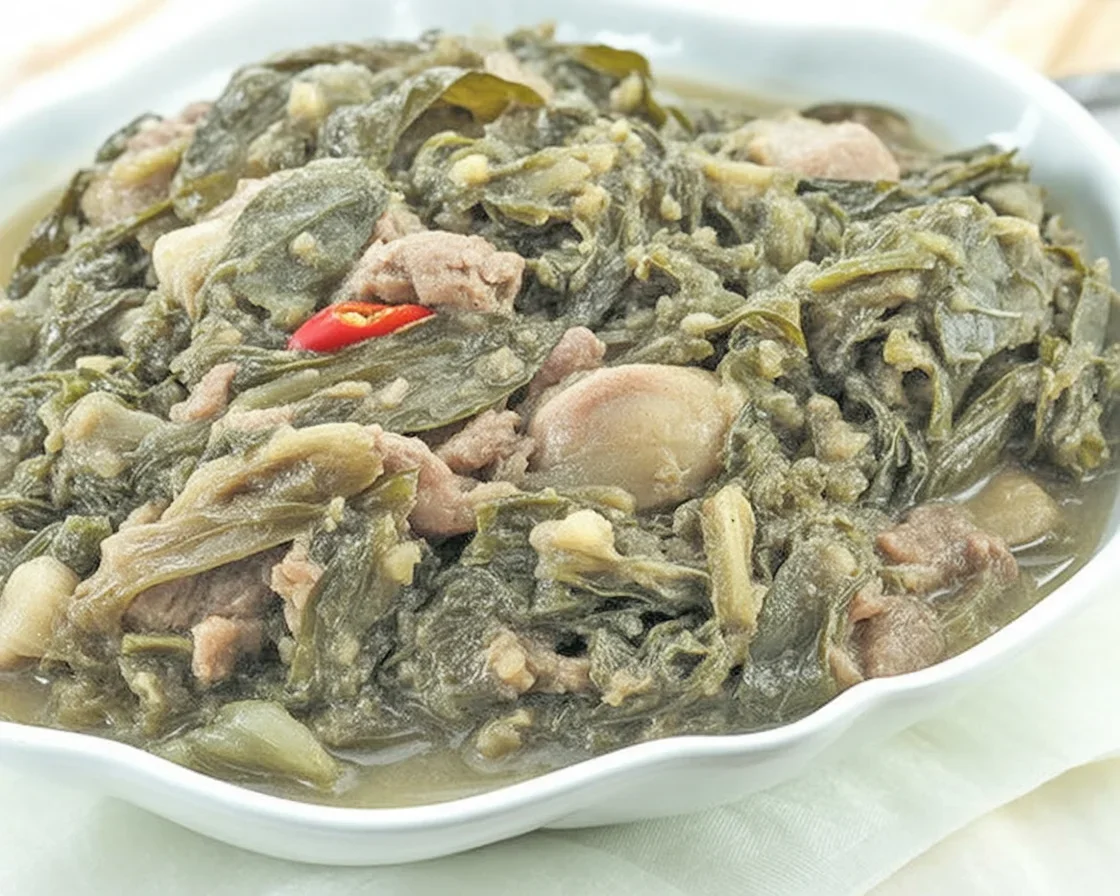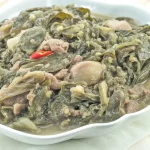So lately, my friends have been asking me for a Filipino laing recipe that won’t end in epic kitchen disaster. I get it. You see this creamy taro concoction at potlucks and just think, “That? At home? Are you nuts?” But trust me—it really is something you can pull off. If you like trying out healthy Filipino recipes, this is up your alley. Plus, if your kids are picky little turkeys, you might actually sneak in some greens using this Bicolano classic (yep, I’m serious). Before I walk you through it, check out this awesome resource for kid-friendly Filipino recipes and grab an even more detailed walkthrough at the Authentic Bicolano Laing Recipe. But hang tight, because I’m about to spill everything I know about laing. 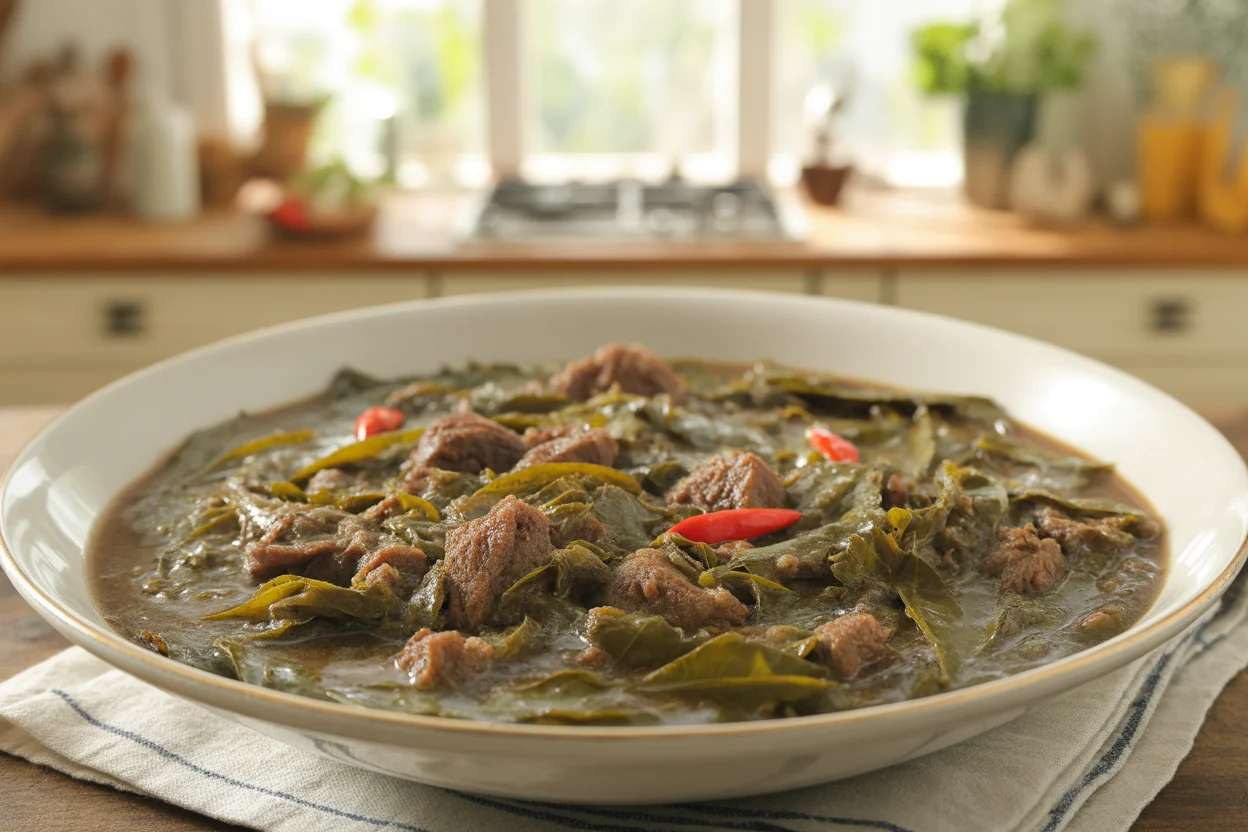
Overview of laing
Laing… where to start? If you’ve ever been to a proper Filipino fiesta, you’ve probably met laing on a crowded buffet table. It’s basically dried taro leaves swimming (I mean honestly soaking) in rich coconut milk, plus a zing of spice and some bits of pork or shrimp if you’re feeling wild. Classic recipe from Bicol region, but honestly, it pops up all over the Philippines these days. There’s something about the combo—earthy greens, velvety coconut, a gentle punch of chili. Even people suspicious of “leafy stuff” (me, once upon a time) fall hard for it. I mean, it sounds simple, but the flavor feels borderline magical. I truly believe this belongs in a five-star restaurant.
I’ve served laing to friends who’d never heard of it, and now they ask for it every holiday. “I had no clue this green stuff could taste so creamy and punchy.” I feel like a kitchen wizard every time!
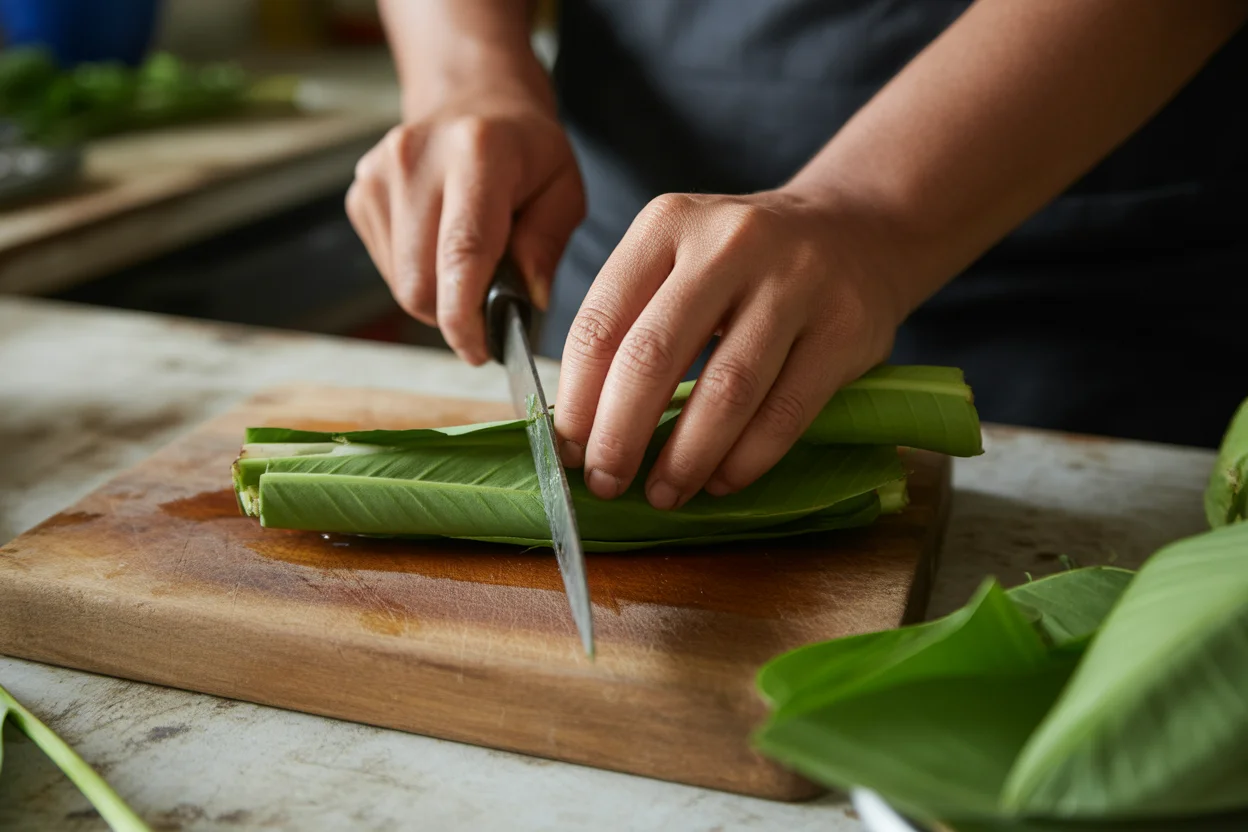
Preparing taro leaves
Alright, let’s talk about the tricky bit that makes everyone hesitate: taro leaves. You want them dried, not fresh, trust me—otherwise, you’ll get a tingly mouth (not in a good way). Most Asian groceries have dried taro leaves. When you get home, don’t be tempted to rinse them like salad—just dust them off gently. Break them up with your hands if they’re in big sheets. That’s it. No high-maintenance prep!
If you can’t find the leaves anywhere, you could substitute with spinach, but honestly, it’s not the same. Part of what makes the Filipino laing recipe special is that mellow earthiness that’s all taro, all the way.
Bonus tip: Open a window when you’re prepping—dried taro can have a funky, earthy smell that’ll surprise you if you’re new to it. Your kitchen will air out soon, I promise.
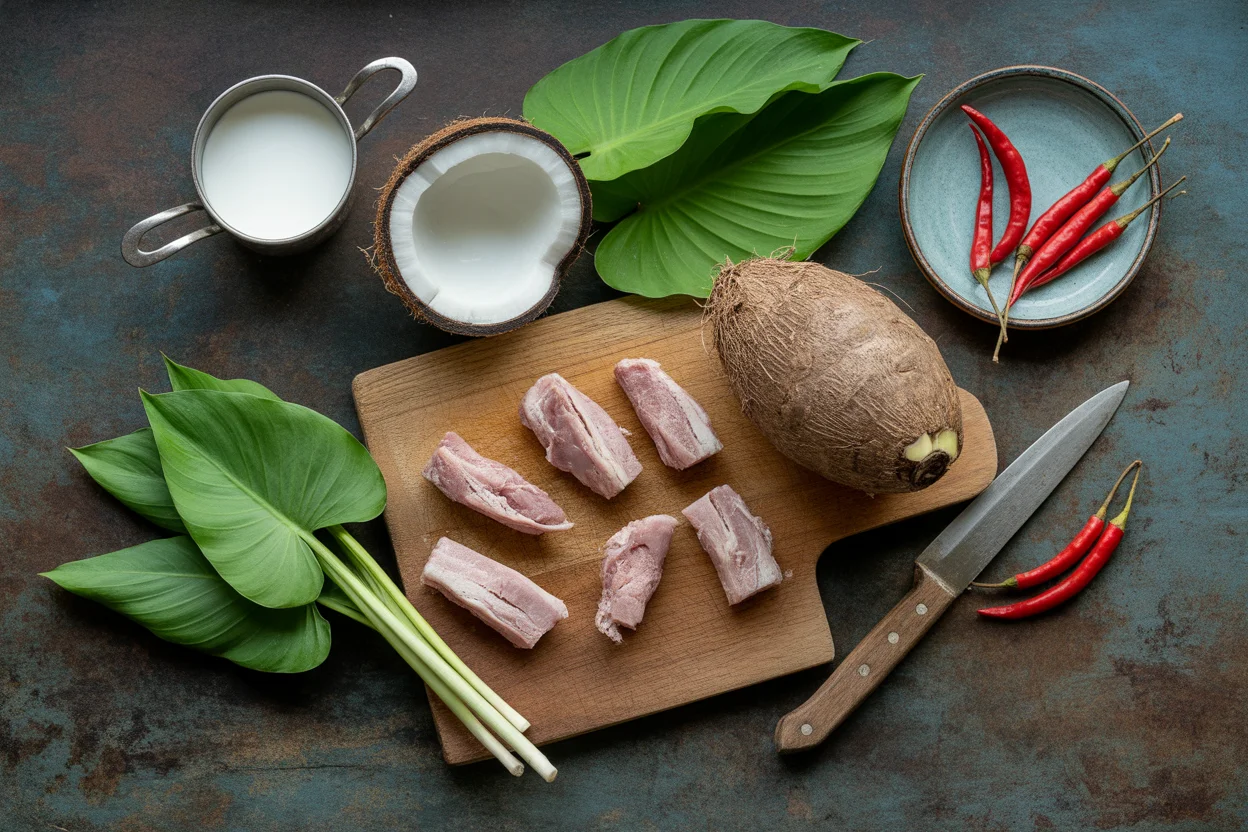
Cooking coconut milk
Here’s where things get fun—and sometimes messy. Grab the thick coconut milk first (canned works fine if you’re not in the mood to crack real coconuts, no judgment). Pour it into a big pot; don’t rush this step. Heating it slowly is the secret. If you blast the heat, it splits and gets oily. You want that creamy, smooth goodness, right?
Keep it on low, shuffle it around now and then, and you’ll see it thicken up a bit. The scent is honestly worth the whole project. If you have access to fresh kakang gata (that’s the first squeeze of coconut cream), oh boy, that is a level-up.
When you add the taro leaves, let them just rest on the coconut milk—no wild stirring. Let them absorb it for a few minutes so they soften and get friendly with the liquid. Patience now saves you mushy laing later!
Adding spices
Alright, now we wake things up. Classic Filipino laing recipe calls for a handful of aromatics: garlic, onion, and ginger. Toss them in when the coconut milk is warming. If you’ve got a little shrimp paste, drop that in. It smells… um, strong… at first, but when it simmers, it’s pure umami magic. Don’t wimp out on the chili if you like heat—siling labuyo is traditional, but bird’s eye or even jalapeno works if that’s all you have.
Personally, I go heavy on the ginger and chili, less salt. But hey, do a little taste test as you go. This is one dish where you can doctor it up. Some even toss in a little pork or dried fish for bite. Flexibility is the name of the game here; you’re not chained to a recipe card!
Serving
Once laing is thick (almost like a solid stew), time to plate! It’s classic with steaming hot rice (seriously, don’t skip the rice—this sauce begs for it). Lately, I even use it as a topping for garlic fried rice… it’s extra.
Here’s how I serve it, in case you need cheat notes:
- Make sure it’s still hot and creamy before serving.
- Sprinkle a bit of fried garlic or chili flakes on top for crunch.
- Great beside Filipino grilled pork BBQ or any bold-flavored dish.
- Leftovers? Even better the next day, trust me.
Want more Filipino comfort food inspiration? Try Classic Filipino Goto—so simple, yet so good.
Regional Bicol version
The Bicol region doesn’t mess around with laing. Their version is always extra spicy, sometimes with coconut cream so thick it barely moves on the spoon. If you’re aiming for authenticity, search out Bicolano recipes—they’ll steer you right.
The locals sometimes add crab fat or little bits of smoked fish for even deeper flavor. If you’ve only known mild, everyday laing, the Bicolano style will seriously knock your socks off. I once ate at a roadside place in Naga and honestly couldn’t talk for five minutes—the heat and creamy coconut blend was unreal. Good thing you can find plenty more authentic Bicolano laing recipes to try if you’re feeling adventurous!
Tips
This recipe is forgiving—mostly. Still, a couple of things make the difference between “wow” and “what happened?” First, never stir the taro leaves too early, or they’ll get slimy, not saucy. Next, don’t skimp on coconut milk; if it looks dry, just pour in a splash more.
Fresh taro leaves will sting if not prepped just right. Stick to dried for easy happiness, I swear. If you want vegetarian laing, ditch the shrimp paste, add extra mushrooms or tofu, and you’re golden. Don’t forget: if you like low-effort, healthy Filipino recipes, laing is perfection.
For bonus kitchen superpowers, make laing a day ahead. The flavors deepen. Leftovers rarely last at my house—but when they do, yum.
Common Questions
What does laing taste like?
It’s creamy, a little earthy, and way more flavorful than you’d expect from “leaves in sauce.” The coconut milk makes it rich, and the chili gives it pop.
Can I use fresh taro leaves instead of dried?
You can, but you have to cook fresh leaves way longer or risk that weird itchy feeling. Dried is easier for beginners.
How long will laing keep in the fridge?
Three days, easily. It even tastes better the day after—just reheat over low heat, add a splash of coconut milk if it looks dry.
Is laing always spicy?
Traditional Filipino laing recipe, especially from Bicol, is spicier. You can skip chilies for a mild version, and it’s still good, but… spice is pretty classic.
Can I freeze leftover laing?
Yup, it freezes well. Just thaw in the fridge and reheat gently. Add coconut milk as needed.
Give laing a shot—you’ll thank yourself
There you go, my no-fuss approach to Filipino laing recipe that’ll blow your mind (or at least, seriously improve boring rice nights). Dive into this with an open mind and a big pot—it’s worth it, especially if you’re exploring comfort food classics or trying to sneak more greens into the family. If you want more, grab inspiration from places like Panlasang Pinoy Laing Recipe and this authentic laing recipe from Foxy Folksy. Whether you’re a Filipino food newbie or a homesick pinoy, laing never disappoints. 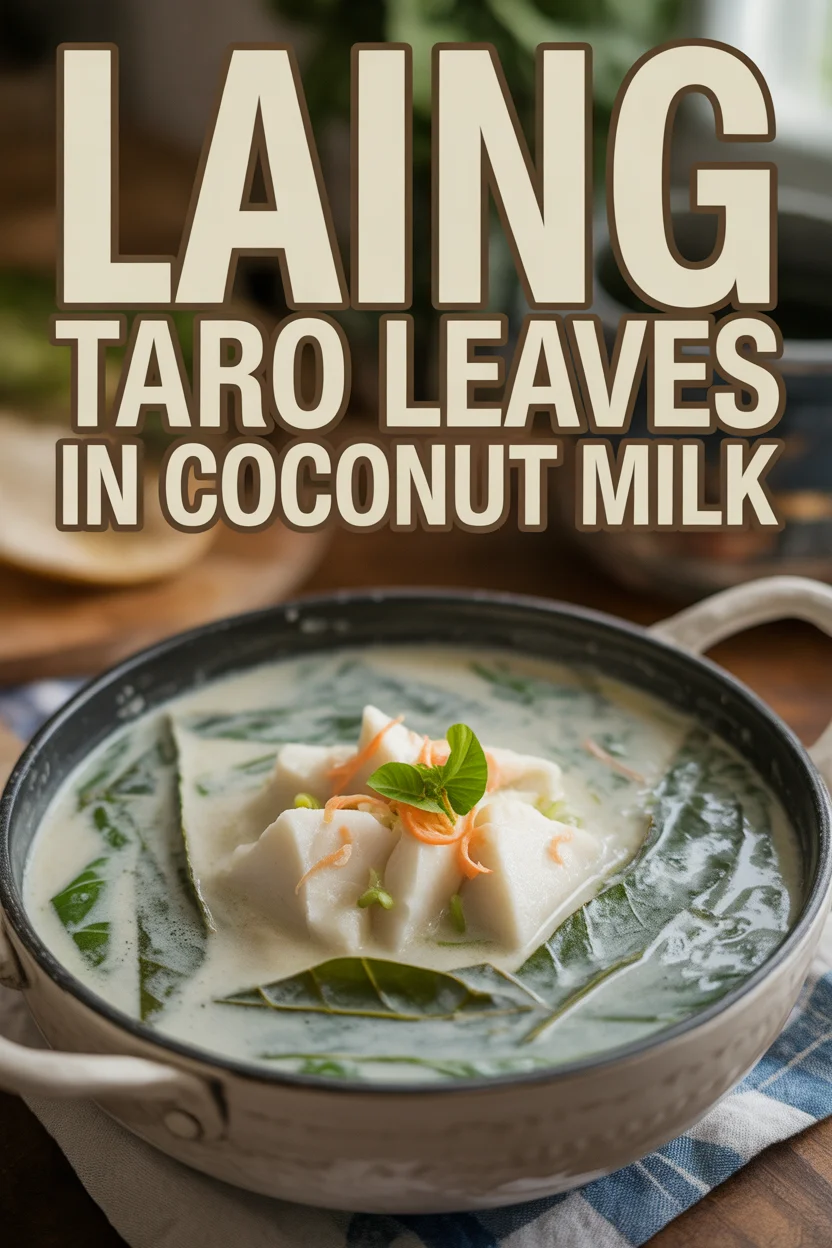
Laing
Ingredients
For the Base
- 1 cup dried taro leaves Avoid fresh taro leaves as they can cause tingling.
- 2 cups coconut milk Use thick canned coconut milk for best results.
For Flavor
- 1 cup onion, chopped Adds sweetness and depth.
- 1 tablespoon garlic, minced Enhances the overall flavor.
- 1 tablespoon ginger, minced Adds warmth and spice.
- 1 tablespoon shrimp paste (optional) For an umami kick; adjust to taste.
- 1 teaspoon sili labuyo or bird's eye chili Add more for increased heat.
- 1 teaspoon salt To taste.
Instructions
Preparing Taro Leaves
- Dust off dried taro leaves gently. Break them up with your hands if they are in big sheets.
- Open a window during preparation to air out the earthy smell.
Cooking Coconut Milk
- Pour coconut milk into a big pot and heat on low. Do not rush this step to avoid splitting.
- Let coconut milk thicken, stirring occasionally.
- Add taro leaves, letting them rest on the surface of the milk to absorb moisture for a few minutes.
Adding Spices
- Once the coconut milk is warm, add the onion, garlic, ginger, and shrimp paste.
- Season with chili and adjust spices according to taste.
Serving
- Once laing is thick, serve hot with rice.
- Garish with fried garlic or chili flakes for added crunch.
